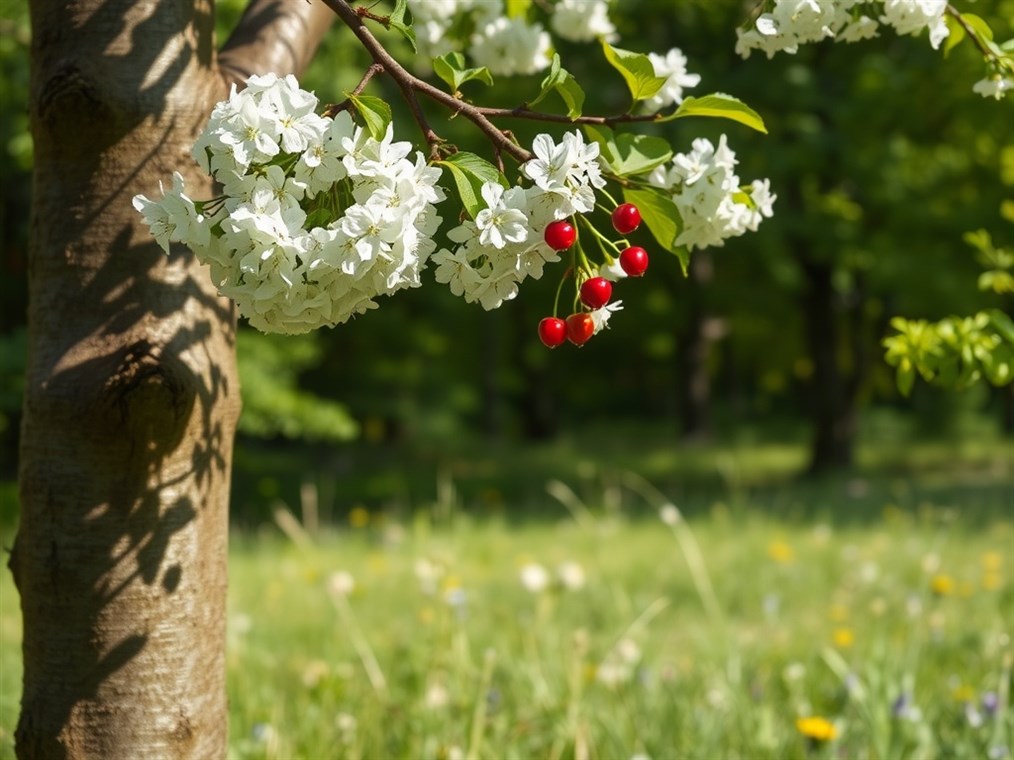Getting to Know the Wild Cherry Tree: A Friendly Guide
Ever strolled through the woods and wondered about that gorgeous tree with the shiny bark and, later in the year, a burst of cherries? Chances are, you were looking at a wild cherry tree, also known as sweet cherry or gean. Scientifically, it’s Prunus avium, and it’s a real beauty, native to the UK, Europe, and parts of Asia and North Africa. But what exactly does it look like? Let’s dive in!
First off, these aren’t tiny little shrubs. We’re talking about proper trees, shedding their leaves each autumn like clockwork. While they can shoot up to 100 feet tall in ideal conditions, most top out around 50 feet. And if you’re lucky, you might be sharing the planet with one for a century – maybe even two if it has a particularly good run! They tend to have a pretty straight trunk and a crown that’s either cone-shaped or nicely rounded.
Now, about that bark – it’s a key giveaway. When the tree is young, the bark is smooth and almost glows with a reddish-brown or purplish-brown sheen. Keep an eye out for those horizontal lines, called lenticels; they’re quite noticeable. As the tree gets older, the bark transforms, becoming darker and developing a scaly pattern, almost like burnt potato chips. Seriously, that’s what it reminds me of! Here’s a neat trick: scratch a twig. If you get a whiff of a strong, bitter almond scent, bingo! You’ve found your wild cherry.
The leaves are oval-shaped, green, and have little teeth along the edges, ending in a point. They’re usually a couple of inches long, sometimes stretching to six. They grow alternately along the branches, not directly opposite each other. A super helpful clue? Look for two tiny red glands right where the leaf stem joins the leaf. The top of the leaf is smooth, but the underside might have some hairs, especially along the veins. And just wait until autumn! The leaves turn the most amazing shades of orange and crimson. It’s a spectacular show.
Come springtime, usually around April, the wild cherry puts on another show with its flowers. Before the leaves even fully emerge, the tree is covered in clusters of white, cup-shaped blossoms. Each flower is small, less than an inch across, but they hang in groups of two to six, creating a stunning display. They smell subtly of almonds, and bees absolutely adore them. They’re like a buzzing, happy cloud around the tree!
If the flowers are pollinated, they turn into cherries, of course! They start green, then blush red, and finally deepen to a rich, almost black-purple when they’re ripe. These wild cherries are usually smaller and a bit more bitter than the ones you buy in the store. They ripen in July and are a feast for birds and other wildlife. And each one has a single stone inside.
Wild cherry trees are happiest in the UK and Europe, as long as you aren’t too far north. They love sunshine and fertile soil, and you’ll often find them hanging out on the edges of woodlands, near streams, or in hedges. They’re not fussy about clay soil either, which is a bonus.
Now, a word of caution: it’s easy to mix up wild cherry with other cherry trees. Sour cherry has fruits on shorter stalks. Bird cherry and cherry plum can also look similar. And Black Cherry has that burnt potato chip bark thing going on, too. So, pay attention to all the details!
These trees are more than just pretty faces, though. People plant them in gardens and parks for their beauty. The wood is prized for making fancy furniture. The cherries feed the wildlife, and the flowers feed the bees. And, believe it or not, some folks have even used the bark and fruit for medicinal purposes, though you have to be careful because large amounts can be poisonous. Plus, wild cherry is great for planting in new forests and making areas look nice and welcoming for wildlife.
So, there you have it! The wild cherry tree: a beautiful, useful, and fascinating part of our natural world. Next time you’re out and about, keep an eye out for one. You might just make a new friend!

